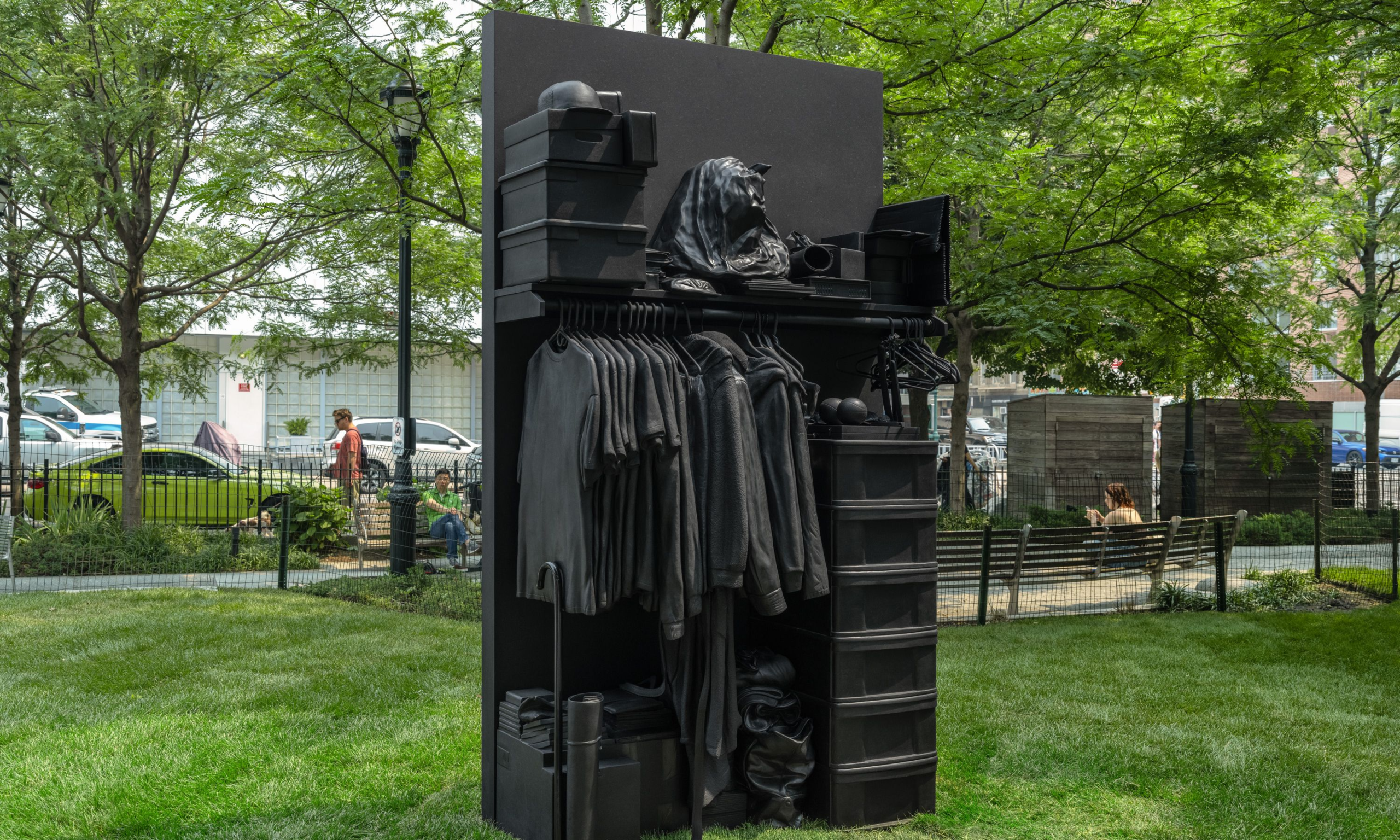Jim Hodges' Craig's Closet (2023) Courtesy of the artist and Gladstone Gallery
The New York City Aids Memorial in has unveiled a new, site-specific sculpture by Jim Hodges as part of its public art initiative and the city’s Art in the Parks programme. Opened in 2016 to honour the more than 100,000 New Yorkers who have died of Aids, the memorial has hosted nearly 20 installations and events by artists including Jean-Michel Othoniel and Jenny Holzer. Entitled Craig’s closet (2023), Hodges’s sculpture will be on view for a full year, allowing Memorial visitors to engage with it during Pride Month in June and beyond. Taking the form of a granite and painted bronze replica of a domestic bedroom closet complete with hanging clothes and shelves packed with personal objects, Craig’s closet explores memory, loss and healing.
“We’d always envisioned the park as a living, breathing space,” says Keith Fox, the chair of the memorial’s board. “Memory and memorialisation, especially around something as complex and ongoing as the Aids epidemic, can be fraught, but the arts provide a wonderful entry point to consider the impact of Aids, not just on the creative community, but in relation to New York City and the world as a whole.”
Under executive director Dave Harper, the memorial’s programmes have spanned artistic disciplines and mediums to engage with a broad audience and teach visitors about the lives and work of people who were lost to Aids, as well as the activists and caretakers who have continued the fight for the last four decades. Hodges’s sculpture weighs 9,000 pounds and stands nearly nine feet tall, making it one of the memorial’s most complex projects to date.
Located in St. Vincent’s Triangle adjacent to many spaces that were central to the early years of the HIV/Aids crisis—including the former hospital that was home to the first and largest Aids ward on the East Coast of the United States—the site of the Memorial acts as a poignant reminder of the history of the area and the disease.
“I hope people see Craig’s closet as a mirror to their own understanding of love and remembrance,” says Fox. “I think visitors will use the installation as a place to remember someone they love, to reflect on loss and to feel connected to our shared history. Most of all, I hope they feel renewed by the incredible poetry and beauty of Jim’s work.”
Hodges himself lived and worked in New York as a queer artist at the height of the Aids crisis in the city and lost many friends to illnesses related to the disease. In creating Craig’s closet, he considered the layered significance of a closet as a private space to conceal the items we cherish and collect. “Inside a closet, time itself is frozen in contrasting meters and timelines fragmented in the things accumulated and arranged in juxtaposed order, stacked and aligned or quickly thrown or casually put there to be taken care of later,” Hodges writes in a statement accompanying the sculpture. “The scene is set and the narratives that blossom come alive whenever the doors swing open, each time giving us a reading, a reminder, an understanding of who we are, where we have been, secrets and dreams we hold.” Hodges's closet remains permanently open for viewers to read their own meaning into its contents.
“The privilege to show Craig’s closet in association and with the sponsorship of the New York City Aids Memorial, as well as with the support of so many who dedicated and devoted their time and energies to bring the work to the public, is a great honour,” Hodges tells The Art Newspaper. “I am beyond grateful that this piece is being unveiled in this context, in this moment, at this site.”

